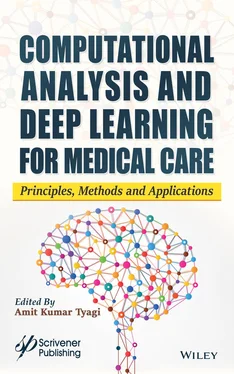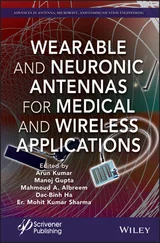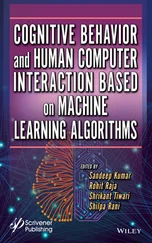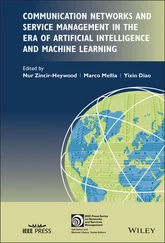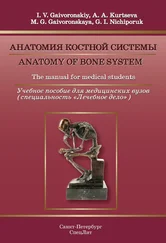1 Cover
2 Title Page
3 Copyright
4 Preface
5 Part 1: Deep Learning and Its Models 1 CNN: A Review of Models, Application of IVD Segmentation 1.1 Introduction 1.2 Various CNN Models 1.3 Application of CNN to IVD Detection 1.4 Comparison With State-of-the-Art Segmentation Approaches for Spine T2W Images 1.5 Conclusion References 2 Location-Aware Keyword Query Suggestion Techniques With Artificial Intelligence Perspective 2.1 Introduction 2.2 Related Work 2.3 Artificial Intelligence Perspective 2.4 Architecture 2.5 Conclusion References 3 Identification of a Suitable Transfer Learning Architecture for Classification: A Case Study with Liver Tumors 3.1 Introduction 3.2 Related Works 3.3 Convolutional Neural Networks 3.4 Transfer Learning 3.5 System Model 3.6 Results and Discussions 3.7 Conclusion References 4 Optimization and Deep Learning-Based Content Retrieval, Indexing, and Metric Learning Approach for Medical Images 4.1 Introduction 4.2 Related Works 4.3 Proposed Method 4.4 Results and Discussion 4.5 Conclusion References
6 Part 2: Applications of Deep Learning 5 Deep Learning for Clinical and Health Informatics 5.1 Introduction 5.2 Related Work 5.3 Motivation 5.4 Scope of the Work in Past, Present, and Future 5.5 Deep Learning Tools, Methods Available for Clinical, and Health Informatics 5.6 Deep Learning: Not-So-Near Future in Biomedical Imaging 5.7 Challenges Faced Toward Deep Learning Using in Biomedical Imaging 5.8 Open Research Issues and Future Research Directions in Biomedical Imaging (Healthcare Informatics) 5.9 Conclusion References 6 Biomedical Image Segmentation by Deep Learning Methods 6.1 Introduction 6.2 Overview of Deep Learning Algorithms 6.3 Other Deep Learning Architecture 6.4 Biomedical Image Segmentation 6.5 Conclusion References 7 Multi-Lingual Handwritten Character Recognition Using Deep Learning 7.1 Introduction 7.2 Related Works 7.3 Materials and Methods 7.4 Experiments and Results 7.5 Conclusion References 8 Disease Detection Platform Using Image Processing Through OpenCV 8.1 Introduction 8.2 Problem Statement 8.3 Conclusion 8.4 Summary References 9 Computer-Aided Diagnosis of Liver Fibrosis in Hepatitis Patients Using Convolutional Neural Network 9.1 Introduction 9.2 Overview of System 9.3 Methodology 9.4 Performance and Analysis 9.5 Experimental Results 9.6 Conclusion and Future Scope References
7 Part 3: Future Deep Learning Models 10 Lung Cancer Prediction in Deep Learning Perspective 10.1 Introduction 10.2 Machine Learning and Its Application 10.3 Related Work 10.4 Why Deep Learning on Top of Machine Learning? 10.5 How is Deep Learning Used for Prediction of Lungs Cancer? 10.6 Conclusion References 11 Lesion Detection and Classification for Breast Cancer Diagnosis Based on Deep CNNs from Digital Mammographic Data 11.1 Introduction 11.2 Background 11.3 Methods 11.4 Application of Deep CNN for Mammography 11.5 System Model and Results 11.6 Research Challenges and Discussion on Future Directions 11.7 Conclusion References 12 Health Prediction Analytics Using Deep Learning Methods and Applications 12.1 Introduction 12.2 Background 12.3 Predictive Analytics 12.4 Deep Learning Predictive Analysis Applications 12.5 Discussion 12.6 Conclusion References 13 Ambient-Assisted Living of Disabled Elderly in an Intelligent Home Using Behavior Prediction—A Reliable Deep Learning Prediction System 13.1 Introduction 13.2 Activities of Daily Living and Behavior Analysis 13.3 Intelligent Home Architecture 13.4 Methodology 13.5 Senior Analytics Care Model 13.6 Results and Discussions 13.7 Conclusion Nomenclature References 14 Early Diagnosis Tool for Alzheimer’s Disease Using 3D Slicer 14.1 Introduction 14.2 Related Work 14.3 Existing System 14.4 Proposed System 14.5 Results and Discussion 14.6 Conclusion References
8 Part 4: Deep Learning - Importance and Challenges for Other Sectors 15 Deep Learning for Medical Healthcare: Issues, Challenges, and Opportunities 15.1 Introduction 15.2 Related Work 15.3 Development of Personalized Medicine Using Deep Learning: A New Revolution in Healthcare Industry 15.4 Deep Learning Applications in Precision Medicine 15.5 Deep Learning for Medical Imaging 15.6 Drug Discovery and Development: A Promise Fulfilled by Deep Learning Technology 15.7 Application Areas of Deep Learning in Healthcare 15.8 Privacy Issues Arising With the Usage of Deep Learning in Healthcare 15.9 Challenges and Opportunities in Healthcare Using Deep Learning 15.10 Conclusion and Future Scope References 16 A Perspective Analysis of Regularization and Optimization Techniques in Machine Learning 16.1 Introduction 16.2 Regularization in Machine Learning 16.3 Convexity Principles 16.4 Conclusion and Discussion References 17 Deep Learning-Based Prediction Techniques for Medical Care: Opportunities and Challenges 17.1 Introduction 17.2 Machine Learning and Deep Learning Framework 17.3 Challenges and Opportunities 17.4 Clinical Databases—Electronic Health Records 17.5 Data Analytics Models—Classifiers and Clusters 17.6 Deep Learning Approaches and Association Predictions 17.7 Conclusion 17.8 Applications References 18 Machine Learning and Deep Learning: Open Issues and Future Research Directions for the Next 10 Years 18.1 Introduction 18.2 Evolution of Machine Learning and Deep Learning 18.3 The Forefront of Machine Learning Technology 18.4 The Challenges Facing Machine Learning and Deep Learning 18.5 Possibilities With Machine Learning and Deep Learning 18.6 Potential Limitations of Machine Learning and Deep Learning 18.7 Conclusion Acknowledgement Contribution/Disclosure References Index
1 Chapter 1 Figure 1.1 Architecture of LeNet-5. Figure 1.2 Architecture of AlexNet. Figure 1.3 Architecture of ZFNet. Figure 1.4 Architecture of VGG-16. Figure 1.5 Inception module. Figure 1.6 Architecture of GoogleNet. Figure 1.7 (a) A residual block. Figure 1.8 Architecture of ResNeXt. Figure 1.9 Architecture of SE-ResNet. Figure 1.10 Architecture of DenseNet. Figure 1.11 Architecture of MobileNets.
2 Chapter 2 Figure 2.1 General architecture of a search engine. Figure 2.2 The increased mobile users. Figure 2.3 AI-powered location-based system. Figure 2.4 Architecture diagram for querying.
3 Chapter 3 Figure 3.1 Phases of CECT images (1: normal liver; 2: tumor within liver; 3: sto... Figure 3.2 Architecture of convolutional neural network. Figure 3.3 AlexNet architecture. Figure 3.4 GoogLeNet architecture. Figure 3.5 Residual learning—building block. Figure 3.6 Architecture of ResNet-18. Figure 3.7 System model for case study on liver tumor diagnosis. Figure 3.8 Output of bidirectional region growing segmentation algorithm: (a) in... Figure 3.9 HA Phase Liver CT images: (a) normal liver; (b) HCC; (c) hemangioma; ... Figure 3.10 Training progress for AlexNet.Figure 3.11 Training progress for GoogLeNet.Figure 3.12 Training progress for ResNet-18.Figure 3.13 Training progress for ResNet-50.
4 Chapter 4Figure 4.1 Proposed system for image retrieval.Figure 4.2 Schematic of the deep convolutional neural networks.Figure 4.3 Proposed feature extraction system.Figure 4.4 Proposed model for the localization of the abnormalities.Figure 4.5 Graph for the retrieval performance of the metric learning for VGG19.Figure 4.6 PR values for state of art ConvNet model for CT images.Figure 4.7 PR values for state of art CNN model for CT images.Figure 4.8 Proposed system—PR values for the CT images.Figure 4.9 PR values for proposed content-based image retrieval.Figure 4.10 Graph for loss function of proposed deep regression networks for tra...Figure 4.11 Graph for loss function of proposed deep regression networks for val...
5 Chapter 6Figure 5.1 Different informatics in healthcare [28].
6 Chapter 6Figure 6.1 CT image reconstruction (past, present, and future) [3].Figure 6.2 (a) Classic machine learning algorithm, (b) Deep learning algorithm.Figure 6.3 Traditional neural network.Figure 6.4 Convolutional Neural Network.Figure 6.5 Psoriasis images [2].Figure 6.6 Restricted Boltzmann Machine.Figure 6.7 Autoencoder architecture with vector and image inputs [1].Figure 6.8 Image of chest x-ray [60].Figure 6.9 Regular thoracic disease identified in chest x-rays [23].Figure 6.10 MRI of human brain [4].
Читать дальше
